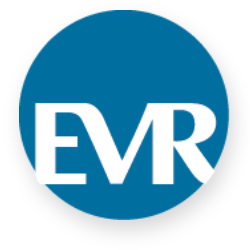Buying media in New Hampshire during the height of the political season is like being one of the less popular candidates: Your message may be great, but it takes extra effort and strategic thinking to ensure it is seen and heard by your target audience.
Available inventory and cost are the major obstacles facing local advertisers when it comes to any presidential election cycle, and that’s being amplified this election season because there are so many candidates running for the Republican ticket.
Buying certain media inventory—most notably network television—has become increasingly difficult, and it doesn’t look as though it will get any easier until after Election Day in November of 2024. Inventory that is typically available and affordable is now already booked out or is far more expensive.
Because of New Hampshire’s status as the first-in-the-nation primary, the rush of candidates looking to get their message out in the state starts early and tends to continue. While many candidates have spent a considerable amount of time physically in the Granite State, it’s nothing compared to the time they’ve spent on our television screens, radio stations and billboards, which is the real issue for local advertisers. With an estimated $2M spent in the Boston metro region for the New Hampshire Republican primary alone, it’s safe to say things are just getting started. Ad-tracking firm AdImpact reported that the 2024 U.S. election cycle “will be the most expensive political cycle of all time, 13% higher than the 2019–2020 cycle’s record of $9.02 billion.”
The Federal Communications Commission (FCC) regulates both radio and network television with the intention of making sure all candidates receive equal time and opportunity to advertise. But this fairness is not passed on to local advertisers. Demand for inventory across media channels has been unprecedented during this political season because of the sheer number of candidates, and that’s driven up the rates.
We’ve seen the most dramatic increase in rates for network television, mainly because New Hampshire has just one major network affiliate. Even those who booked well in advance at lower rates are now getting bumped from their original slot and presented with make-good schedules.
So, what should one consider when preparing for this competitive advertising season?
Book Early
With limited inventory and increasing prices, booking early is crucial to secure your spot, and even then, your ads may be displaced. This is why many media contracts contain a contingency plan: the make-good. When ads are “bumped,” make-goods are free adjustments or credits given when spots are preempted by political ads.
Employ Time Strategy
Strategically time your campaigns, analyzing the political calendar to identify key dates, such as debates, primaries or election days, and plan accordingly. By avoiding peak political ad times and targeting their audience during quieter periods, advertisers can maximize the visibility and impact of their campaigns.
Be as Different as Possible
Craft dynamic ads that not only set your brand apart but also stand as a refreshing departure from the typical political advertising noise.
Consider Alternative Channels
Think creatively—you have options. If broadcast TV isn’t the right fit, consider alternatives such as digital TV advertising, like over-the-top or connected TV.
For those with budget constraints, radio and cable television are alternatives worth exploring. While radio stations are also regulated by the FCC, they have the ability to expand their commercial inventory to accommodate the increased demand. Cable television is not regulated and, while it may not have the same clout as network television, cable gives clients the opportunity to reach a more targeted audience, more frequently and for much lower rates.
Additional placement opportunities include Spotify, print, out of home (like bus wraps, bus shelters, mobile billboards) and digital initiatives such as Facebook, YouTube, etc. Target audience, budget and goals determine where you should place your media on these alternate media channels. If you’re unsure of where to best reach your audience, check out EVR’s Media Matrix.
The opportunity to effectively spread your message always exists, and that’s certainly the case when it comes to placing media during a New Hampshire political window. You just have to make sure you put together a winning campaign.











